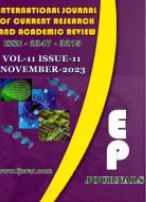Abstract Volume:11 Issue-11 Year-2023 Original Research Articles
 |
Online ISSN : 2347 - 3215 Issues : 12 per year Publisher : Excellent Publishers Email : editorijcret@gmail.com |
Finger millet is adaptable to adverse agro-ecological conditions with low input, tolerant to moisture stress and plays a significant role both as food grain and animal feed in areas where production of other cereals are reduced by marginal environments. The national and regional research centers recommended considerable numbers of varieties to varied agro- ecologies to increase the productivity of finger millet. Hence, it is necessary to evaluate varieties for stability of yield at varying environments. To this end, this study was conducted with the objective of identifying high yielding, biotic and abiotic stresses resistance or tolerance varieties adaptable to Buno Bedele Zone of Western Oromia. A total of nine finger millet varieties including local check were evaluated in RCBD. The combined data analysis for grain yield was very highly significant across locations and years. AMMI analysis showed that environments, varieties and their interaction effects were significantly different. The stability and high yielding ability of the varieties have been graphically depicted by the AMMI bi-plot. The variation for seed yield among the varieties for each variety was significant at different environments. Varieties such as Boneya and Gute were widely adapted to high yielding environments. In GGE bi-plot analysis; IPCA1 and IPCA2 explained 48.02% and 34.34% of variation, respectively, of finger millet variety by environment interaction and made a total of 82.36% of variation. Therefore, Boneya (34.39 qtha-1) and Gute (33.44 qt ha-1) were identified as most stable and thus recommended for production in the study area and similar agro-ecologies.
How to cite this article:
Gebeyehu Chala and Gemechu Deso. 2023. Performance Evaluation of Finger Millet (Eluesine coracana L. Gaertn) Varieties for Grain Yield in Buno Bedele, South West Oromia, Ethiopia.Int.J.Curr.Res.Aca.Rev. 11(11): 39-50doi: https://doi.org/10.20546/ijcrar.2023.1111.005



Quick Navigation
- Print Article
- Full Text PDF
- How to Cite this Article
- on Google
- on Google Scholor
- Citation Alert By Google Scholar
